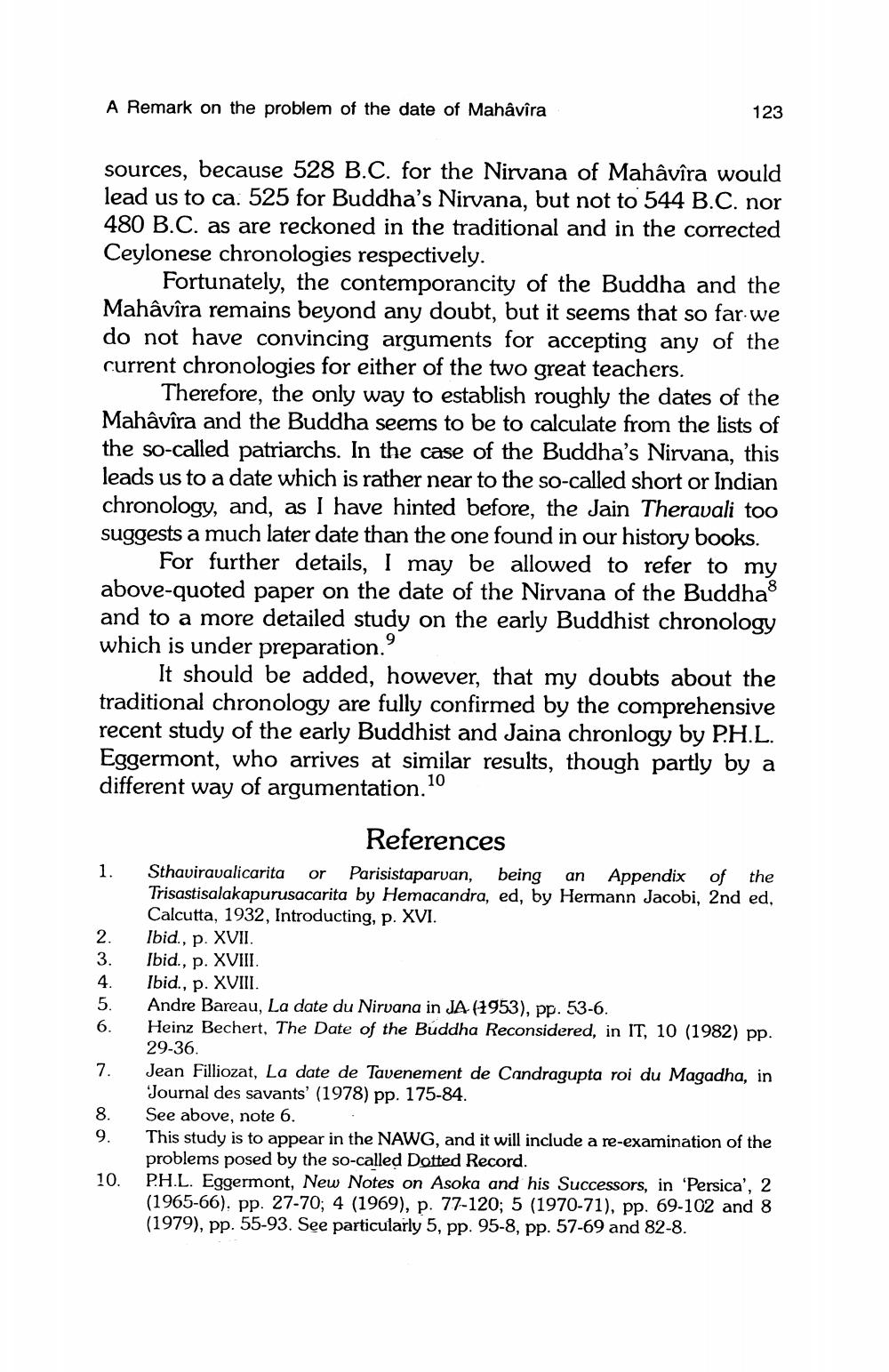________________
A Remark on the problem of the date of Mahâvîra
sources, because 528 B.C. for the Nirvana of Mahâvîra would lead us to ca. 525 for Buddha's Nirvana, but not to 544 B.C. nor 480 B.C. as are reckoned in the traditional and in the corrected Ceylonese chronologies respectively.
Fortunately, the contemporancity of the Buddha and the Mahâvîra remains beyond any doubt, but it seems that so far we do not have convincing arguments for accepting any of the current chronologies for either of the two great teachers.
Therefore, the only way to establish roughly the dates of the Mahâvîra and the Buddha seems to be to calculate from the lists of the so-called patriarchs. In the case of the Buddha's Nirvana, this leads us to a date which is rather near to the so-called short or Indian chronology, and, as I have hinted before, the Jain Theravali too suggests a much later date than the one found in our history books.
For further details, I may be allowed to refer to my above-quoted paper on the date of the Nirvana of the Buddha and to a more detailed study on the early Buddhist chronology which is under preparation."
It should be added, however, that my doubts about the traditional chronology are fully confirmed by the comprehensive recent study of the early Buddhist and Jaina chronlogy by P.H.L. Eggermont, who arrives at similar results, though partly by a different way of argumentation."
10
1.
23456
7.
8.
9.
123
10.
References
Sthaviravalicarita or Parisistaparuan, being an Appendix of the Trisastisalakapurusacarita by Hemacandra, ed, by Hermann Jacobi, 2nd ed, Calcutta, 1932, Introducting, p. XVI.
Ibid., p. XVII. Ibid., p. XVIII.
Ibid., p. XVIII.
Andre Bareau, La date du Nirvana in JA (1953), pp. 53-6.
Heinz Bechert, The Date of the Buddha Reconsidered, in IT, 10 (1982) pp. 29-36.
Jean Filliozat, La date de Tavenement de Candragupta roi du Magadha, in Journal des savants' (1978) pp. 175-84.
See above, note 6.
This study is to appear in the NAWG, and it will include a re-examination of the problems posed by the so-called Dotted Record.
P.H.L. Eggermont, New Notes on Asoka and his Successors, in 'Persica', 2 (1965-66). pp. 27-70; 4 (1969), p. 77-120; 5 (1970-71), pp. 69-102 and 8 (1979), pp. 55-93. See particularly 5, pp. 95-8, pp. 57-69 and 82-8.




